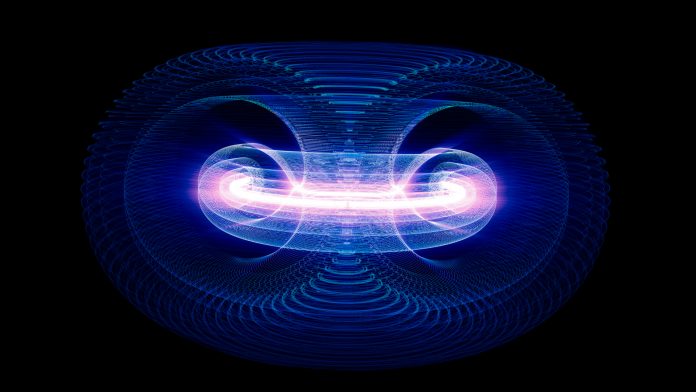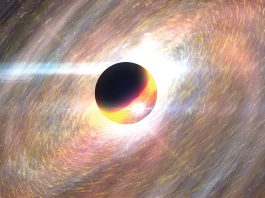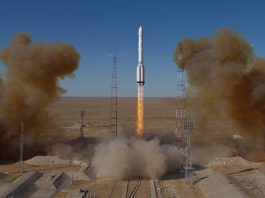Frank Sette speaks to The Innovation Platform (TIP) about the capabilities of this new generation of high-energy synchrotron source.
On December 2 2019, the first electrons were injected in the new ESRF Extremely Brilliant Source storage ring according to schedule. This is an important milestone on the way to opening to the international scientific community the first high-energy fourth-generation synchrotron light source, known as EBS – Extremely Brilliant Source. It marks the successful completion of the engineering and installation of a worldwide-unique accelerator within the existing ESRF infrastructure, and the start of the commissioning phase of a brand-new generation of high-energy synchrotron.
The ESRF – The European Synchrotron Radiation Facility – is the most intense source of synchrotron-generated light, producing X-rays 100 billion times brighter than the X-rays used in hospitals. These X-rays, endowed with exceptional properties, are produced at the ESRF by the high energy electrons that race around the storage ring, a circular tunnel measuring 844 metres in circumference.
Each year, the demand to use these X-ray beams increases and near to 9000 scientists from around the world come to Grenoble, to “beamlines”, each equipped with state-of-the-art instrumentation.
TIP speaks to ESRF Director General, Francesco Sette, about the ESRFs recent achievement of successfully circulating and accumulating electrons in the accelerator.
To begin, what is the EBS particle accelerator, and what have you just discovered?
The EBS accelerator is a brand-new storage ring which has been optimised for the production of X-rays, through the emission of synchrotron radiation by electrons accelerated in the tunnel. It is the first accelerator based off a new magnetic design, which allows researchers to obtain an x-ray beam with a brightness of about 100 to 1000 times higher than what is available today in older storage rings. For that reason, it is considered to be the first fourth-generation high energy, X-ray source in the world.
Third generation sources, which are the basis of all existing synchrotrons around the world, were also invented here at the ESRF, as well as the first first-generation storage ring which began operations 1994. This success has driven the reconstruction of all the others storage rings around the world.
New discoveries will begin when the accelerator is open to scientists. After four years of hard work – which were marked by engineering design, procurement and installation of the new accelerator in the existing refurbished tunnel – we have successfully completed this upgrade. This accomplishment was demonstrated by the successful circulation and accumulation of electrons in this accelerator, indicating that the basic concepts work.
The next few months will be dedicated to optimising the new accelerator characteristic and bringing it up to the design parameters. The next big step is to open the shutters that will allow these very bright x-rays to reach the instrument where scientists can use them for their experimentation. This is something that will start in March, and will be completed in August of next year when operations will resume and the instrument will go back to full-service mode for the scientific community.
Can you tell us about the huge engineering feat in bringing it to life?
The EBS was an engineering realisation. The completely new design relied on the most advanced engineering challenges in terms of both magnet design and ultra-high vacuum components for a particle accelerator. All the components had to be precision-aligned to within 50 µm (about half the width of a human hair), over a distance of almost 1 km. As a result, everything had to be procured and controlled within those parameters, and finally assembled and aligned with the same precision.
We carried out this work in parallel to the normal operation of the old accelerator until December 2018. On the 10th of December 2018, we shut down the old storage rings in order to proceed with the renovation of the tunnel and install all the components of the new storage ring which were pre-assembled before. Within 12 months, this whole feat was completed with no accidents, with a perfect organisation of teamwork about 250 different individuals working on this programme. At one point, we even had up to 100 people with different expertise working simultaneously on this one-kilometre-long tunnel. I’m very proud that everything was carried out without accident and according to schedule that was set up in September 2016.
Shortly after the completion date, electrons were immediately circulating and accumulating in the new accelerator. We were able to see this very bright beam inside in this new magnetic design, demonstrating that the assembly and distribution process was done up to the highest standards of expectations. Of course, we now have to optimise its performances in terms of store current, position stability and support. This is normal routine and we are quite confident that at this point, we should be able to achieve the performance required for us to open up to the scientific community.
What are some of capabilities of this new generation of high-energy synchrotron source?
The new source will be 100 to 1000 times brighter than anything else done before. In the EBS, there are more than 1000 magnets, something in the range of 400 vacuum chambers that are all complicated and precisely aligned, and approximately 10,000 electrical connections that are continuously monitored. There are around 400 kilometres of cables that to have to be brought from inside the accelerator to all of the different power supplies and control systems of the new accelerator and all this is very complicated. Of course, it is easy to make mistakes, for example objects or cables that are not properly connected, but electrons have been circulating according to expectation in the storage ring, demonstrating that there are no major flaws in the conceptual design. We can see that things are going exactly how we were expecting them to go.
What does this mean in terms of new research opportunities in various different fields?
It’s well known that after the ESRF results are published, there will be about 18 projects around the world that are trying to catch up with the ESRF implementation. The most advanced one is the Advanced Photon Source in Chicago, and they should have their new storage ring inspired by the ESRF design operational in three to four years from now. In many facilities, from Japan to Russia, Europe to the US, they are all geared up to adopt the door that the ESRF design have opened.
The X-ray science case enhances what you can do today with laser light. With electron microscopes, you can have atomic resolution and look at an object’s surface. With X-rays, like those at the EBS, you can have any spatial resolution you want, from the scale of a micron down to a few atoms, but even inside a material. X-ray synchrotrons allow scientists to look at objects in normal and extreme conditions, for example examining geodynamic movements of our planet that is the basis of all energy transfer from the core to the surface, to better understand tectonic motion, future energy sources, and so on.
Following this achievement of the first injected electrons, what is next? What are the next steps?
The next big step for us is to reach the accelerating design parameters. This will then enable us to open the beamlines and specialised laboratories to the scientific community, and allow scientists to restart their experimental programmes. We hope to do that by the beginning of March.
This task was a great achievement. It went from the day in which it was conceived in 2012, to the Council approving the construction of a new ring very rapidly in 2014, and finally to the project being finally launched in 2015. My gratitude goes to the Member States and their help over the past five years. The EBS is something which Europe should be very proud of because it shows that all the countries can work together in a very healthy and concreated way. Fantastic results are being obtained by the expert staff that we have here, and this only been possible because we select the best people through the European Member States that come to work here. We are proud to be creating a fantastic concert of people playing together.
Francesco Sette
Director General
European Synchrotron Radiation
Facility (ESRF)
Tweet @esrfsynchrotron
www.esrf.eu
Please note, this article will also appear in the first edition of our new quarterly publication.









